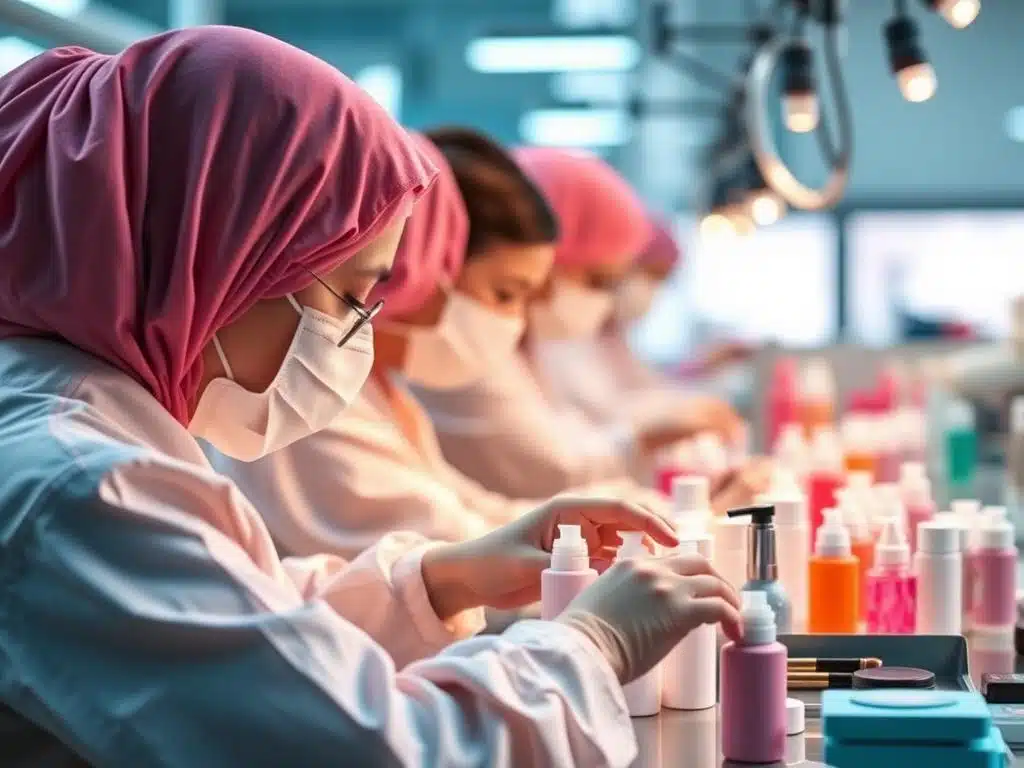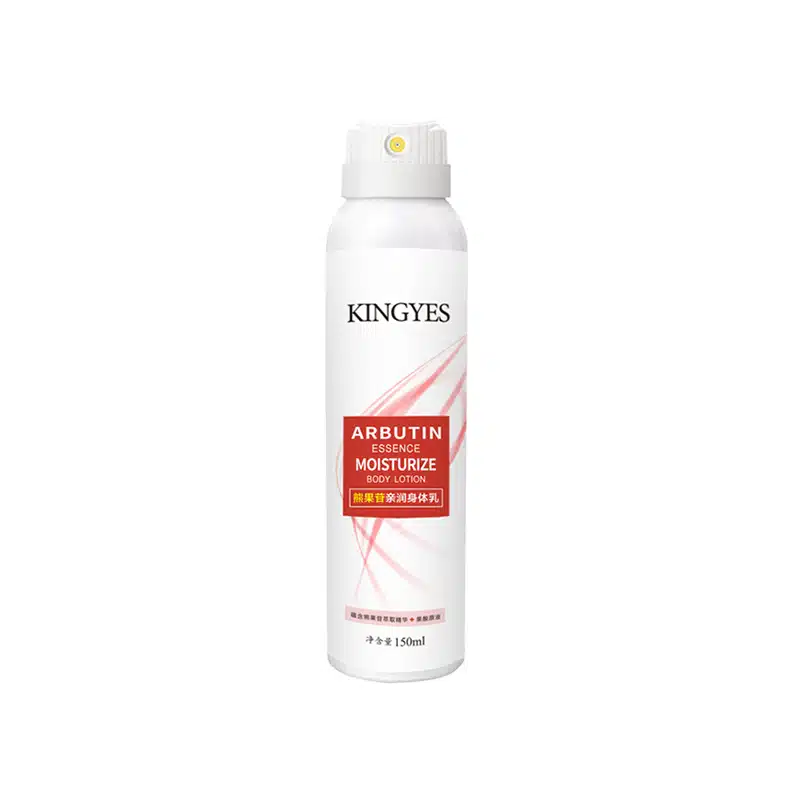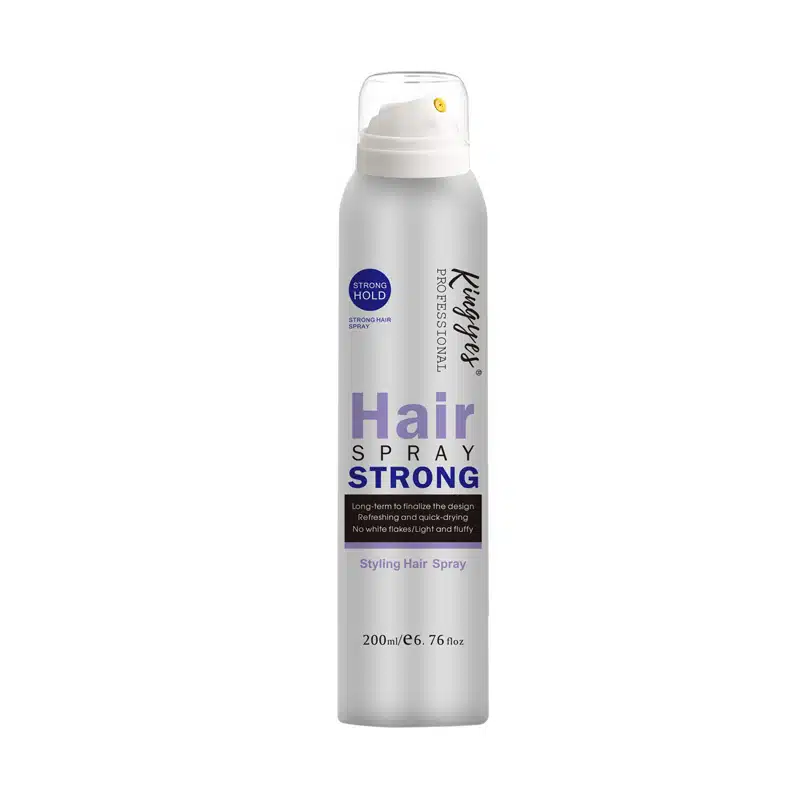
How Many Cosmetic Factories Are There?
Table of Contents
Unveiling the Powerhouses: How Many Cosmetic Factories Fuel the Global Beauty Industry in 2024?
The beauty industry is a global behemoth, a multi-billion dollar market that touches the lives of people across every continent. From everyday essentials like toothpaste and cleanser to high-end skincare and luxurious perfume, cosmetic products are ubiquitous in modern society. But have you ever considered the sheer scale of production required to meet this global demand? This article delves into the fascinating world of cosmetic manufacturing, exploring the vast network of factories that churn out the beauty products we use daily. We’ll attempt to answer the question: “How many cosmetic factories are there?” and examine the factors that make this number so difficult to ascertain. This article is worth reading because it provides a unique perspective on the often-overlooked manufacturing side of the cosmetic industry, revealing the complex processes, key players, and global trends that shape the availability and diversity of the products we find on store shelves and in our online shopping carts.
Defining “Cosmetic Factory”: What Counts in This Calculation?
Before we can attempt to quantify the number of cosmetic factories, it’s essential to define what we mean by the term. Does it include only large-scale industrial plants owned by major cosmetic brands like L’oréal was the leading, Estee Lauder, or Shiseido? Or should it also encompass smaller, independent operations, private label manufacturers, and even contract manufacturers who produce cosmetic products for multiple brands? For the cosmetic industry, it is important to understand how this all works.
For the purposes of this article, we’ll adopt a broad definition, including any facility involved in the production of finished cosmetic and personal care products, regardless of size or ownership structure. This includes factories that manufacture a wide range of cosmetic products, from makeup and skincare to hair care and fragrance, as well as those specializing in niche categories like natural and organic cosmetics or specific beauty items like mascara or perfume. However, we will not include facilities that solely produce raw materials or packaging components, as these fall under different industry classifications.
Why is it Difficult to Determine the Exact Number of Cosmetic Factories?
While we can conceptualize what constitutes a cosmetic factory, arriving at a precise global count is remarkably challenging. Several factors contribute to this difficulty:
- Lack of Centralized Data: There isn’t a single, comprehensive global registry or database that tracks every cosmetic manufacturing facility. Unlike some industries with stricter licensing and reporting requirements, the cosmetic industry is more decentralized, making it difficult to compile accurate and up-to-date statistics and facts. You cannot find the most up-to-date statistics in one place.
- Varying Definitions and Classifications: Different countries and organizations may have varying definitions of what constitutes a cosmetic factory, making it hard to compare data across regions. Some databases may only include facilities above a certain size or production capacity, while others may include smaller operations.
- Dynamic Nature of the Industry: The cosmetic industry is constantly evolving, with new businesses starting up, existing ones expanding or contracting, and companies merging or being acquired. This fluidity makes it challenging to maintain an accurate count of manufacturing facilities at any given time.
- Private Label and Contract Manufacturing: The prevalence of private label and contract manufacturers further complicates the picture. One factory might produce cosmetic products for numerous brands, making it difficult to attribute production to a specific company or brand.
- Proprietary Information: Many cosmetic manufacturers consider their production capacity and the number of their facilities to be proprietary information, and they may not be willing to disclose these details publicly.
These factors combined make it virtually impossible to arrive at an exact, real-time count of all cosmetic factories worldwide.
Where are the World’s Cosmetic Manufacturing Hubs Located?
Cosmetic manufacturing is a global phenomenon, but certain regions have emerged as major hubs for the industry. These hubs often benefit from a combination of factors, including access to raw materials, a skilled workforce, established infrastructure, favorable regulatory environments, and proximity to key consumer markets. The production of cosmetics and beauty products are often centered in these areas.
Here’s a look at some of the most significant cosmetic manufacturing centers:
- Europe: Europe, particularly France, Italy, and Germany, has a long and storied history in cosmetics and fragrance production. France is renowned for its luxury cosmetic brands and its expertise in research and development. Italy is a global leader in color cosmetics manufacturing and beauty packaging innovation. Germany is a major producer of skincare and hair care products. These countries host numerous factories for both established brands and contract manufacturers. L’oréal was the leading cosmetic company in 2023.
- North America: The United States and Canada have a significant cosmetic manufacturing presence. The U.S. is home to many large and small cosmetic companies, with manufacturing facilities spread across the country. Several states, including California, New Jersey, and New York, have a particularly high concentration of cosmetic manufacturing activity.
- Asia-Pacific: The Asia-Pacific region has experienced explosive growth in cosmetic manufacturing in recent decades. South Korea has emerged as a global beauty powerhouse, with its innovative “K-beauty” products and advanced manufacturing capabilities. China is the world’s largest producer and exporter of cosmetic products, manufacturing for both domestic consumption and for export to international brands. Japan has a long-standing reputation for high-quality cosmetics and skincare, with a focus on advanced technology and meticulous craftsmanship. The Shiseido company is a very popular cosmetic brand.
- Emerging Markets: Other regions, such as Latin America (particularly Brazil), Southeast Asia, and the Middle East, are also witnessing growth in their cosmetic manufacturing sectors, driven by rising consumer demand, increasing disposable incomes, and the development of local brands.
It’s important to note that the global cosmetics market is characterized by a complex network of supply chains and manufacturing relationships. Many cosmetic companies have manufacturing operations in multiple countries, and contract manufacturers often produce goods for a variety of brands across different regions.
How Does the Role of Contract Manufacturers in the Cosmetic Industry Complicate the Count?
Contract manufacturers play a vital and increasingly important role in the cosmetic industry, but their presence significantly complicates any attempt to accurately count the number of cosmetic factories worldwide. Contract manufacturers are third-party companies that specialize in manufacturing products on behalf of other companies, often referred to as “brand owners” or “marketers.”
Here’s why they make it difficult to determine the number of factories:
- One Factory, Multiple Brands: A single contract manufacturer might produce cosmetic products for dozens or even hundreds of different cosmetic brands. This means that counting the factory as one unit doesn’t accurately reflect the number of brands or the volume of products being produced within that facility.
- Lack of Transparency: The relationships between cosmetic brands and their contract manufacturers are often confidential. Brands may not publicly disclose which factories produce their goods, and contract manufacturers may not reveal the full list of their clients. This lack of transparency makes it challenging to track which factories are producing for which brands.
- Varying Levels of Involvement: Contract manufacturers can offer a wide range of services, from simply manufacturing a product according to a brand’s specifications to providing full-service solutions that include formulation, packaging, and even labeling. This makes it hard to categorize them uniformly. They may provide cosmetic solutions to a variety of different companies.
- Dynamic Relationships: The relationships between brands and contract manufacturers can be fluid. Brands may switch manufacturers based on factors like cost, capacity, or quality, making it challenging to maintain an up-to-date picture of manufacturing arrangements.
Contract manufacturers are essential to both large and small brands in the industry.
What is Private Label Cosmetic Manufacturing and How Does it Affect Factory Numbers?
Private label cosmetic manufacturing is a specific type of contract manufacturing that further complicates the task of counting cosmetic factories. In this model, a manufacturer produces cosmetic products that are then branded and sold by another company, typically a retailer, distributor, or beauty brand. Private label cosmetics are common in skincare, hair care, and color cosmetics.
Here’s how private label manufacturing impacts factory counts:
- One Factory, Many Brands (Again): Similar to general contract manufacturing, a single private label manufacturer might produce goods for numerous brands, making it difficult to associate a specific factory with a single brand or product line. This makes it hard to determine how many factories are making which products.
- White Labeling: Some private label manufacturers offer “white label” products, which are generic formulations that can be rebranded and sold by multiple companies with minimal customization. This means that the same product, produced in the same factory, might be sold under dozens of different brand names, further obscuring the origin of the product.
- Hidden Production: Private label arrangements are often kept confidential, as the brand selling the product may not want to disclose that they are not the original manufacturer. This lack of transparency makes it challenging to trace products back to their source factories. They may use a cosmetic manufacturing company that is not widely known.
- Increased Competition: The rise of private label has lowered the barriers to entry for new cosmetic brands, leading to a proliferation of brands in the market. This makes it even harder to track the number of factories involved, as many of these brands rely on a relatively small number of private label manufacturers.
Private label allows smaller brands to produce high-quality products.
How is the Rise of E-commerce Impacting Cosmetic Manufacturing?
The growth of e-commerce has revolutionized the beauty industry, and cosmetic manufacturing is no exception. Here’s how online sales are reshaping the manufacturing landscape:
- Direct-to-Consumer (DTC) Brands: E-commerce has fueled the rise of DTC cosmetic brands that sell exclusively online, bypassing traditional retail channels. These brands often rely on contract manufacturers or private label producers, allowing them to focus on marketing, branding, and customer acquisition. The growth of DTC brands is increasing the demand for flexible and responsive manufacturing partners.
- Smaller Batch Production: Online brands, particularly those in the early stages, often require smaller production runs compared to established brands that sell through brick-and-mortar stores. This has led to a growing need for cosmetic manufacturers who are willing to accommodate smaller batch sizes and offer lower minimum order quantities.
- Faster Product Development: The fast-paced nature of e-commerce and social media means that cosmetic trends can emerge and fade quickly. Online brands need to be agile and responsive, bringing new products to market rapidly to capitalize on emerging trends. This puts pressure on cosmetic manufacturers to have faster turnaround times and more flexible production processes. They need to keep up with industry trends.
- Increased Demand for Online Fulfillment Capabilities: Cosmetic manufacturers are increasingly being asked to handle online order fulfillment, including warehousing, picking, packing, and shipping directly to consumers. This requires manufacturers to have robust logistics and fulfillment capabilities.
- Personalization and Customization: E-commerce enables greater personalization and customization of cosmetic products. Online brands can leverage data and technology to offer personalized recommendations, customized formulations, and bespoke products tailored to individual customer needs and preferences.
E-commerce is changing the cosmetic industry.
How are Trends Like “Clean Beauty” Shaping the Manufacturing Landscape?
The “clean beauty” movement, along with the growing consumer demand for natural and organic cosmetics, is having a profound impact on cosmetic manufacturing. Cosmetic manufacturers are having to adapt their formulations, sourcing practices, and production processes to meet these evolving preferences.
Here’s how these trends are shaping the landscape:
- Ingredient Sourcing: There’s a growing demand for natural ingredients, botanical extracts, and organic alternatives to conventional synthetic ingredients. Cosmetic manufacturers are increasingly seeking out suppliers who can provide these ingredients and ensure their traceability and sustainability.
- Formulation Challenges: Formulating with natural and organic ingredients can be more complex than working with traditional synthetic ingredients. These ingredients may have different properties, stability profiles, and preservation requirements. Cosmetic formulators need to develop specialized expertise to create safe, effective, and stable products using these ingredients.
- Alternative Preservation Systems: Clean beauty products often avoid certain synthetic preservatives that have raised concerns among some consumers. Cosmetic manufacturers are exploring and adopting natural preservation methods, such as using plant-derived extracts with antimicrobial properties or employing hurdle technology (a combination of preservation methods).
- Certifications and Standards: To demonstrate their commitment to clean, natural, or organic principles, many cosmetic brands seek certifications from third-party organizations, such as Ecocert, COSMOS, USDA Organic, or the Natural Products Association. Cosmetic manufacturers must ensure that their formulations, ingredients, and manufacturing processes comply with the requirements of these certification standards.
- Sustainability: The clean beauty movement often goes hand in hand with broader sustainability concerns. Cosmetic manufacturers are under increasing pressure to adopt more environmentally friendly practices, such as using sustainable packaging materials, reducing water and energy consumption, minimizing waste, and ethically sourcing ingredients. Sustainable products are becoming very popular.
- Transparency and Traceability: Consumers are demanding greater transparency from cosmetic brands regarding their ingredient sourcing, manufacturing practices, and safety testing. Cosmetic manufacturers need to be prepared to provide clear and accurate information and to trace their ingredients back to their source.
Clean beauty is changing the cosmetic industry.
What are the Challenges Faced by Cosmetic Manufacturers in 2024?
Cosmetic manufacturers face a complex and rapidly evolving landscape in 2024, with numerous challenges that can impact their operations and profitability. Here are some key challenges:
- Supply Chain Disruptions: The global cosmetics market relies on intricate supply chain networks for sourcing raw materials, components, and packaging. Ongoing disruptions due to factors like the pandemic, geopolitical instability, climate change, and transportation bottlenecks continue to pose significant challenges. These disruptions can lead to increased costs, delays, and shortages of essential materials.
- Rising Costs: Cosmetic manufacturers are facing rising costs across various aspects of their operations, including raw materials, energy, labor, transportation, and packaging. Inflationary pressures and supply chain issues have contributed to these cost increases, putting pressure on profit margins.
- Regulatory Compliance: The cosmetic industry is subject to a complex and evolving web of regulations and standards that vary by country and region. Cosmetic manufacturers must navigate these regulations, ensuring that their products, formulations, labeling, and manufacturing practices comply with all applicable requirements. They must ensure that their products are safe to use. This can be a particularly daunting task for companies operating in multiple markets.
- Sustainability Demands: As discussed earlier, consumers are increasingly demanding sustainable and eco-friendly products. Cosmetic manufacturers face pressure to adopt more sustainable practices throughout their value chain, from ingredient sourcing and manufacturing to packaging and waste management. This often requires significant investments and changes to established processes.
- Counterfeiting: The cosmetic industry is particularly vulnerable to counterfeiting, with fake products posing risks to consumer safety, brand reputation, and revenue. Cosmetic manufacturers must invest in anti-counterfeiting measures, such as unique packaging features, product authentication technologies, and supply chain security measures.
- Intense Competition: The cosmetic industry is highly competitive, with a mix of established multinational corporations, independent brands, and new entrants vying for market share. Cosmetic manufacturers must constantly innovate, differentiate their products, and adapt to changing consumer preferences to stay competitive.
- Digital Disruption: The rise of e-commerce, social media, and digital marketing has transformed the way consumers discover, research, and purchase cosmetic products. Cosmetic manufacturers need to adapt to this digital landscape, developing strong online presences, engaging with consumers through social media, and optimizing their products and packaging for online sales. They need to create a good online experience for customers.
- Talent Acquisition and Retention: Finding and retaining skilled workers, particularly in specialized areas like cosmetic chemistry, formulation science, and quality control, can be a challenge for cosmetic manufacturers.
Cosmetic companies need to overcome these challenges to succeed.
What Does the Future Hold for Cosmetic Manufacturing?
The future of cosmetic manufacturing is likely to be shaped by several key trends and advancements:
- Automation and Robotics: Increased adoption of automation and robotics in various stages of the manufacturing process, leading to greater efficiency, precision, and reduced labor costs. This includes automated filling, packaging, and labeling systems.
- Artificial Intelligence (AI): AI-powered tools for cosmetic formulation development, quality control, personalized product recommendations, demand forecasting, and supply chain optimization.
- 3D Printing: Use of 3D printing technologies for creating customized cosmetic products, packaging, and applicators, enabling greater personalization and flexibility.
- Biotechnology: Growing use of biotechnology to develop innovative and sustainable ingredients, such as lab-grown collagen, plant stem cell extracts, and fermentation-derived ingredients.
- Sustainable Manufacturing Practices: Continued emphasis on reducing the environmental impact of cosmetic manufacturing through measures like water and energy conservation, waste reduction, use of renewable energy, and sustainable sourcing of ingredients and packaging materials. Cosmetic manufacturers will need to make sure that their products meet new standards for sustainability.
- Personalization and Customization: Increasing demand for cosmetic products tailored to individual needs and preferences, enabled by advancements in data analytics, AI, and on-demand manufacturing technologies.
- Waterless and Concentrated Formulas: Development of more waterless and concentrated cosmetic formulations to reduce water consumption, packaging waste, and transportation costs. Examples include items like solid shampoo bars.
- Transparency and Traceability: Growing consumer demand for transparency about ingredient sourcing, manufacturing practices, and product safety, leading to greater use of technologies like blockchain to track and verify product information.
The cosmetic manufacturing landscape is continuously evolving, and companies that can embrace innovation, adapt to changing consumer demands, and adopt sustainable and ethical practices will be best positioned for success in the years to come. It is an industry that is constantly growing.
What are Some of the Most Well-Known Cosmetic Manufacturers?
While we’ve discussed the challenges of counting every cosmetic factory, here are some of the most well-known and largest cosmetic manufacturers that own and operate numerous manufacturing facilities worldwide. This will provide some insight into the scale of these operations.
- L’Oréal: Headquartered in France, L’Oréal is the world’s largest cosmetic company, with a vast portfolio of brands across various categories, including L’Oréal Paris, Maybelline New York, Garnier, Kiehl’s, Lancôme, and many more. They operate numerous manufacturing plants globally. In 2023, L’oréal was the leading cosmetic manufacturer.
- Unilever: A British-Dutch multinational consumer goods company, Unilever has a significant presence in the beauty and personal care market. Their brands include Dove, Axe, Rexona, Lux, Sunsilk, and Vaseline. They have manufacturing facilities around the world.
- Estée Lauder Companies: An American multinational manufacturer and marketer of prestige skincare, makeup, fragrance, and hair care products. Their portfolio includes brands like Estée Lauder, Clinique, MAC Cosmetics, Bobbi Brown, and La Mer. They have manufacturing operations in several countries.
- Procter & Gamble (P&G): An American multinational consumer goods corporation, P&G has a significant presence in the beauty and personal care market. Their brands include Olay, Pantene, Head & Shoulders, Gillette, and Old Spice. They operate numerous manufacturing plants globally.
- Shiseido Company, Limited: A Japanese multinational cosmetic company, Shiseido offers a wide range of products, including skincare, makeup, fragrance, and hair care. Their brands include Shiseido, NARS, bareMinerals, and Drunk Elephant. They have manufacturing facilities primarily in Asia but also in other regions.
- Coty Inc.: An American multinational beauty company, Coty is known for its strong presence in fragrance, color cosmetics, and professional beauty. Their portfolio includes brands like CoverGirl, Rimmel London, Sally Hansen, and fragrance licenses for brands like Calvin Klein, Hugo Boss, and Gucci. They have a global manufacturing footprint.
Here is a table listing some of the major cosmetic manufacturers and some of their well-known brands.
| Manufacturer | Brands |
|---|---|
| L’Oréal | L’Oréal Paris, Maybelline New York, Garnier, Kiehl’s, Lancôme, Urban Decay, Yves Saint Laurent Beauty, Giorgio Armani Beauty, and many more. |
| Unilever | Dove, Axe, Rexona, Lux, Sunsilk, TRESemmé, Vaseline, Pond’s, and many more. |
| Estée Lauder Companies | Estée Lauder, Clinique, MAC Cosmetics, Bobbi Brown, La Mer, Jo Malone London, Tom Ford Beauty, and many more. |
| Procter & Gamble (P&G) | Olay, Pantene, Head & Shoulders, Old Spice, Gillette, SK-II, and many more. |
| Shiseido Company, Limited | Shiseido, NARS, bareMinerals, Drunk Elephant, Clé de Peau Beauté, and many more. |
| Coty Inc. | CoverGirl, Rimmel London, Sally Hansen, Max Factor, and fragrance licenses for brands like Calvin Klein, Hugo Boss, Gucci, Burberry, and more. |
Conclusion
While arriving at a precise number of cosmetic factories worldwide is virtually impossible due to the industry’s complex and dynamic nature, it’s clear that thousands of facilities across the globe are dedicated to producing the vast array of beauty products that consumers demand. From large-scale factories owned by multinational cosmetic giants to smaller operations run by independent brands and contract manufacturers, these facilities play a critical role in shaping the beauty industry. Cosmetic manufacturing in 2024 faces numerous challenges and opportunities, driven by factors such as evolving consumer preferences, technological advancements, sustainability concerns, and regulatory changes. As the beauty industry continues to innovate and adapt, the manufacturing landscape will undoubtedly continue to transform in the coming years. The cosmetic industry will continue to change.
10 Most Important Things to Remember About Cosmetic Manufacturing
- The cosmetic industry relies on a vast network of factories worldwide, but the exact number is difficult to determine due to the industry’s complexity and the prevalence of contract manufacturing.
- Cosmetic manufacturing hubs are located in Europe (France, Italy, Germany), North America (U.S., Canada), and Asia-Pacific (South Korea, China, Japan).
- Contract manufacturers and private label producers play a significant role, often producing goods for multiple cosmetic brands, further complicating the count.
- The rise of e-commerce and direct-to-consumer brands has increased demand for smaller batch production and faster product development cycles.
- Trends like “clean beauty,” sustainability, and personalization are reshaping cosmetic manufacturing, driving demand for natural and organic ingredients, eco-friendly products, and customizable formulations.
- Cosmetic manufacturers face challenges related to supply chain disruptions, rising material costs, regulatory compliance, counterfeiting, and intense competition.
- Cosmetic factories are increasingly adopting automation, robotics, AI, and other advanced technologies to improve efficiency and quality.
- Cosmetic manufacturers must adhere to Good Manufacturing Practices (GMP) and other quality and safety standards to ensure their products are safe and effective.
- Major global players like L’Oréal, Unilever, Estee Lauder, Procter & Gamble, and Shiseido own numerous manufacturing facilities worldwide and produce a significant portion of the world’s cosmetic products.
- The future of cosmetic manufacturing will likely involve greater personalization, sustainability, transparency, and the use of innovative technologies.
Comments
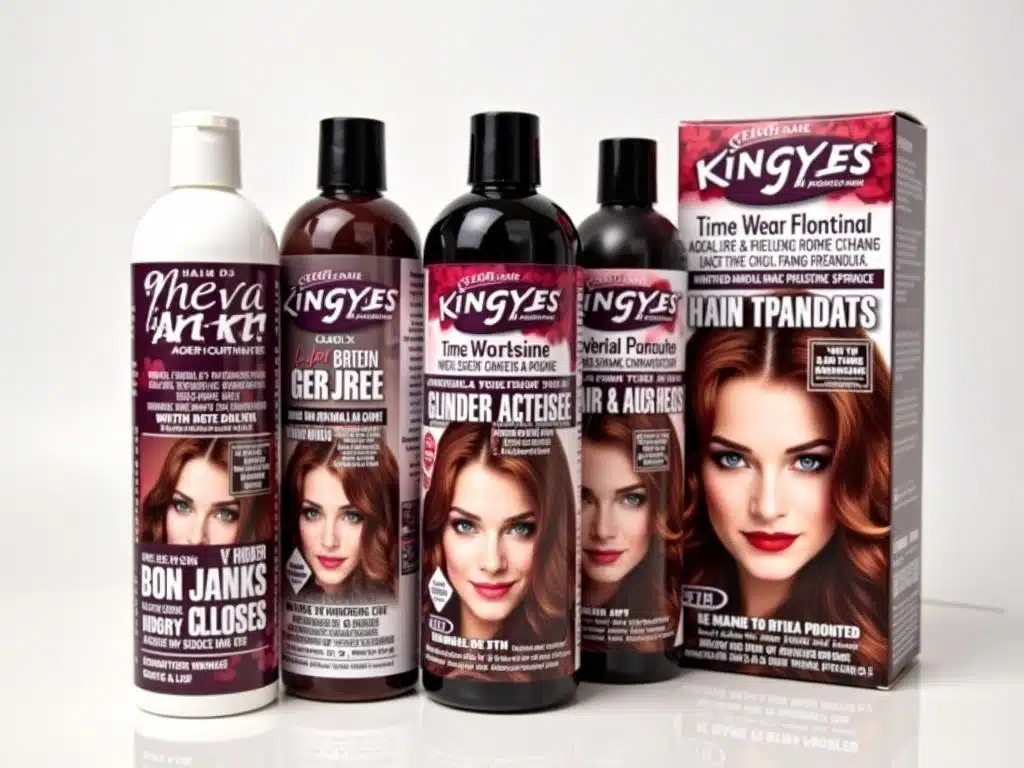
What Is The Best Colored Hair Dye Brand?
Choosing the right hair color can be a game-changer, whether you’re looking for gray coverage, a subtle refresh, or a bold transformation.

What Are The Pros And Cons Of Dry Shampoo?
Ever wondered if using dry shampoo is good or bad for your hair?

How To Sell Cosmetics On Carrefour?
Carrefour, one of the world’s largest supermarket chains, offers more than just groceries.

Does Hair Dye Have To Be FDA Approved?
Coloring your hair can be a fun way to change your look, but have you ever wondered about the safety of hair dye?
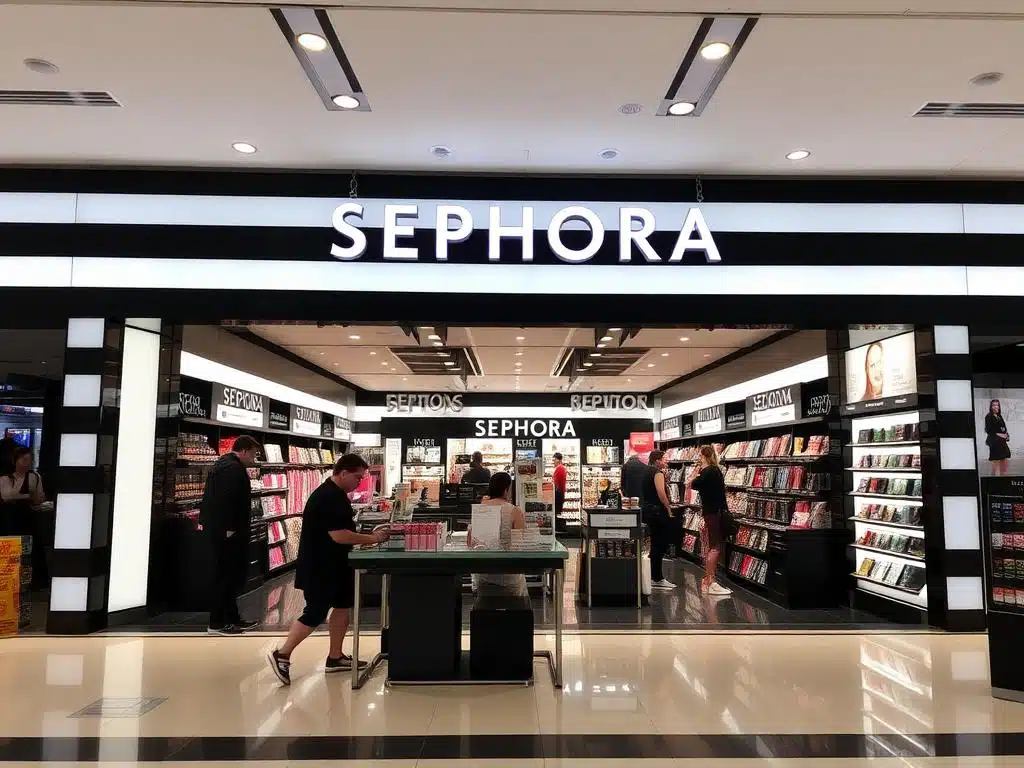
Is Sephora Ecommerce?
Sephora is a name synonymous with beauty, known for its vast selection of prestige beauty products and immersive retail experiences.
- +86 151 1839 7303
- [email protected]
- Mon-Sun 07:00-23:00
Tags
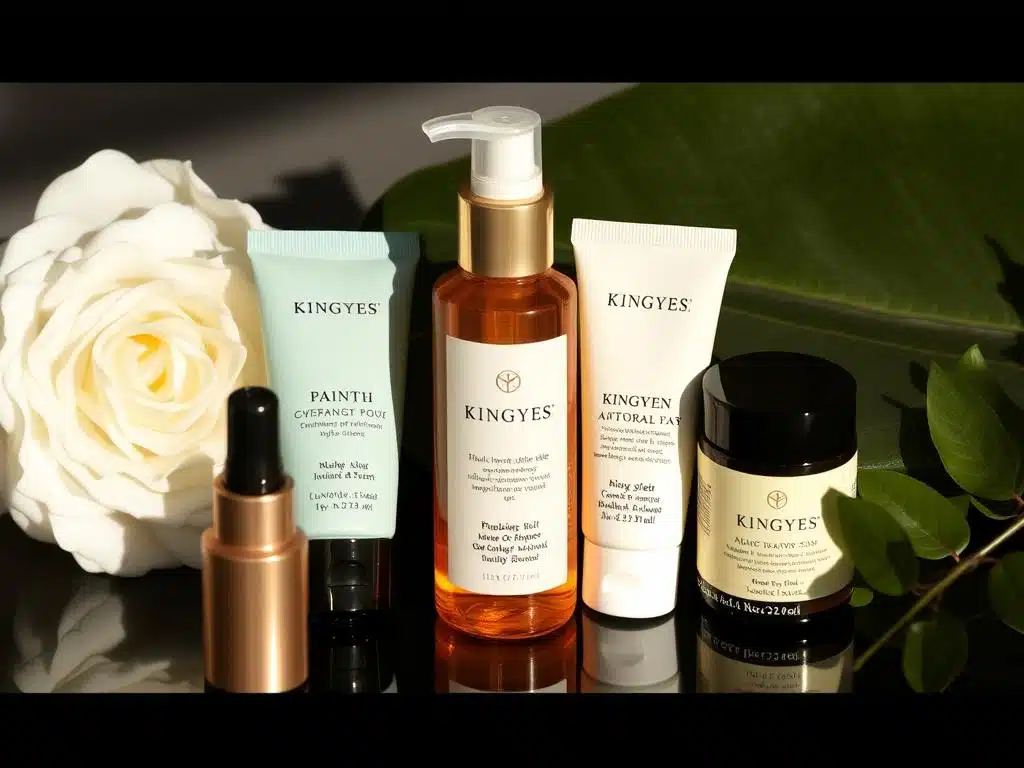
How To Sell Cosmetics On WeChat?
Are you ready to tap into the world’s largest beauty market?

How To Sell Cosmetics On Shopee?
Looking to sell cosmetics and tap into the booming e-commerce market of Southeast Asia?

How To Cooperate With Cosmetics Factories?
In the dynamic and competitive beauty industry, partnering with the right cosmetic manufacturer is paramount to the success of your cosmetics business.

